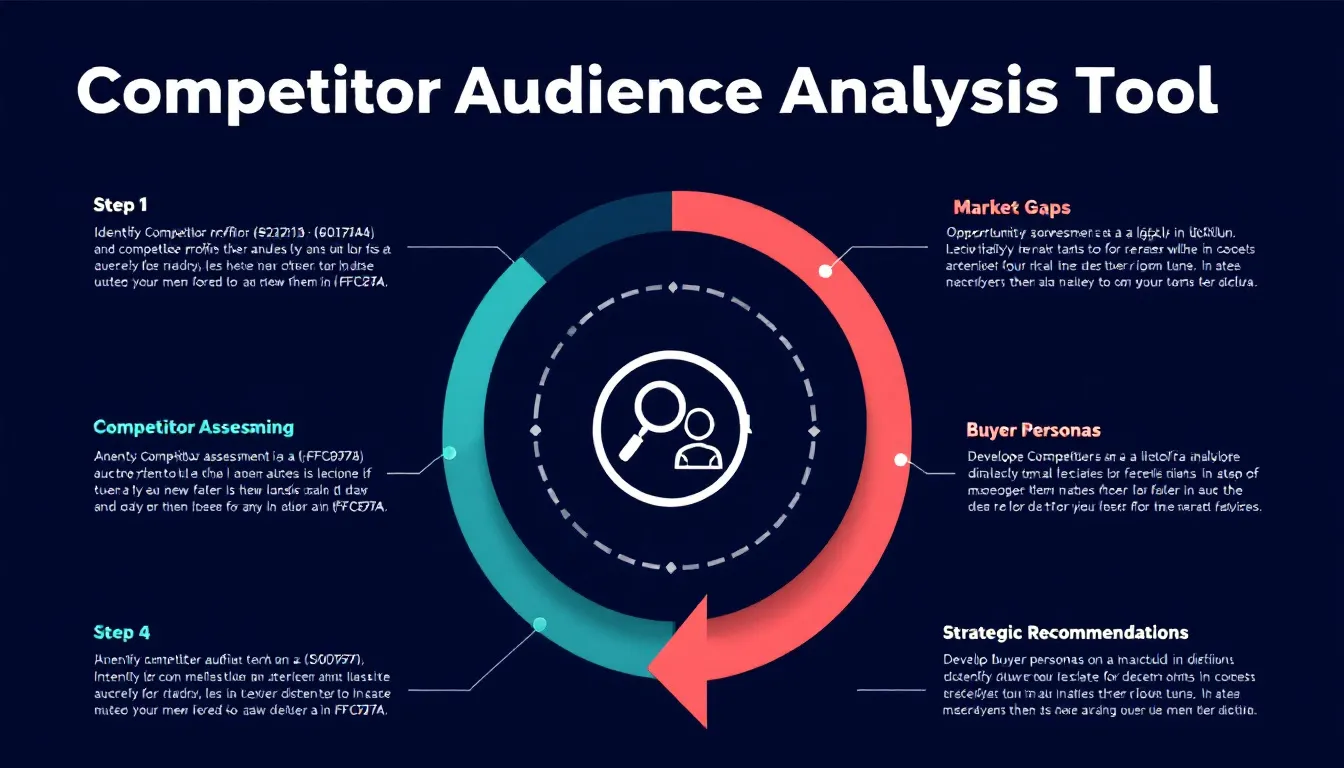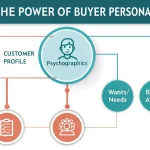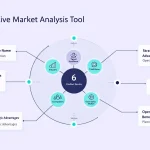Is this tool helpful?
How to Use the Competitor Audience Analysis Tool Effectively
Step 1: Fill in Your Company Name
Enter your company’s official or trading name. Make sure it clearly identifies your business. For example:
- Bright Future Renewable Energy
- Urban Style Boutique
Step 2: List Your Main Competitors
Provide a list of your primary competitors, adding one competitor per line. Include direct and indirect competitors to broaden analysis scope. Example entries:
- For Bright Future Renewable Energy:
- SolarTech Solutions
- EcoPower Innovations
- GreenGrid Energy
- For Urban Style Boutique:
- City Chic Apparel
- Metro Fashion Hub
- Downtown Style Co.
Step 3: Specify Your Industry or Market Sector
Enter your primary industry or niche. Include specific segments if relevant. This helps target analysis. Some examples:
- “Renewable Energy – Residential Solar Solutions”
- “Fashion Retail – Urban Women’s Apparel”
Step 4: Describe Your Products or Services
Provide a clear overview of your offerings, covering:
- Key products or services you provide
- Unique benefits or features that set you apart
- Your typical customer segments
- Any important value propositions
Example:
- Bright Future Renewable Energy: “We offer affordable residential solar panel installation with maintenance services focused on sustainability and long-term cost savings.”
- Urban Style Boutique: “Curated urban women’s fashion combining comfort and modern trends, targeting young professionals aged 25-40.”
Step 5: (Optional) Describe Your Current Target Audience
Including your existing audience helps detect market gaps and new opportunities. You may add details such as:
- Age ranges, locations, or professions
- Customer interests and values
- Spending habits and preferences
- Typical purchase triggers and channels used
Example:
- Young urban professionals aged 28-38 seeking sustainable lifestyle products.
- Small business owners in the hospitality sector interested in energy cost reduction.
What the Competitor Audience Analysis Tool Does
This tool analyzes your competitors’ target audiences and helps you create detailed buyer personas. By combining competitor profiling with market insights, it identifies areas where your business can seize untapped opportunities. It guides your marketing efforts by:
- Profiling competitor audience characteristics and behavior patterns
- Detecting market segments that are underserved or overlooked
- Generating actionable buyer personas based on real data
- Recommending strategic moves to improve your competitive positioning
Key Areas of Insight Delivered
- Competitor audience demographics and preferences
- Market gaps and emerging customer segments
- Target audience motivations and pain points
- Buyer persona profiles tailored to your products/services
- Opportunity assessment for product development and marketing
Practical Uses of the Competitor Audience Analysis Tool
You’ll use this tool to tailor your business strategies, sharpen customer targeting, and make informed decisions. Here are common applications:
Optimizing Market Positioning
- Identify competitor strengths and weaknesses
Analyze how your value proposition can stand out - Spot market segments with less competition but high potential
- Adjust messaging to emphasize benefits that address customer pain points
Refining Customer Segmentation
- Discover new customer groups you may have missed
- Understand detailed behavioral and psychographic traits
- Improve engagement through personalized marketing and content
Case Example 1: Specialty Coffee Shop
A regional coffee shop chain used this tool to analyze competitors’ customers and uncovered a loyal group of remote workers seeking quiet workspaces with high-speed Wi-Fi. It led to:
- Creation of dedicated “remote work” seating areas
- 20% increase in weekday foot traffic
- 15% boost in average customer spend during off-peak hours
Case Example 2: SaaS Marketing Platform
By identifying underserved small businesses in niche industries, a SaaS provider expanded features targeting those segments. The results included:
- 30% growth in new client acquisition in 6 months
- Higher user engagement rates due to tailored tools
- Improved customer retention and satisfaction
Benefits of Using This Competitor Target Audience Analysis Tool
Strategic Benefits
- Pinpoint underserved market opportunities
- Design focused marketing campaigns that resonate
- Make informed resource allocation decisions
- Get ahead of competitors by anticipating market trends
Operational Benefits
- Simplify market research and target audience understanding
- Base decisions on data-driven insights rather than assumptions
- Reduce the risk associated with entering new markets
- Enhance returns on marketing investments
Frequently Asked Questions
What exactly is a buyer persona?
A buyer persona represents a fictional, generalized customer profile based on real market data. It includes demographics, behavior patterns, goals, and challenges to help you understand your ideal customers better.
How often should I update my competitor analysis?
Updating your competitor and audience analysis every 3 to 6 months keeps your insights relevant. In fast-changing markets, update more frequently to stay competitive.
Can this tool handle international market data?
Yes, you can enter competitors and industry details for different regions or countries, making the tool suitable for global market analysis.
What preparation do I need before using the tool?
Gather your company name, list of key competitors, industry specifics, product or service descriptions, and current target audience information if available.
How do I apply the analysis outcomes?
Use the insights to adjust marketing strategies, refine product offerings, and improve customer engagement. Create actionable plans based on identified market gaps and new audience segments.
Is this tool suitable for both B2B and B2C businesses?
Yes. It adapts to your business model and helps you understand your specific market and customers more deeply, whatever your industry.
Optimizing Resources Using Audience Analysis
Leverage the insights you gain from this tool to focus your efforts effectively. This includes:
- Concentrating marketing on segments with the highest potential
- Designing product features that resonate with identified buyer personas
- Setting pricing strategies tailored to specific customer segments
- Improving customer support based on audience needs
- Enhancing communication channels for clearer messaging
Important Disclaimer
The calculations, results, and content provided by our tools are not guaranteed to be accurate, complete, or reliable. Users are responsible for verifying and interpreting the results. Our content and tools may contain errors, biases, or inconsistencies. Do not enter personal data, sensitive information, or personally identifiable information in our web forms or tools. Such data entry violates our terms of service and may result in unauthorized disclosure to third parties. We reserve the right to save inputs and outputs from our tools for the purposes of error debugging, bias identification, and performance improvement. External companies providing AI models used in our tools may also save and process data in accordance with their own policies. By using our tools, you consent to this data collection and processing. We reserve the right to limit the usage of our tools based on current usability factors.







